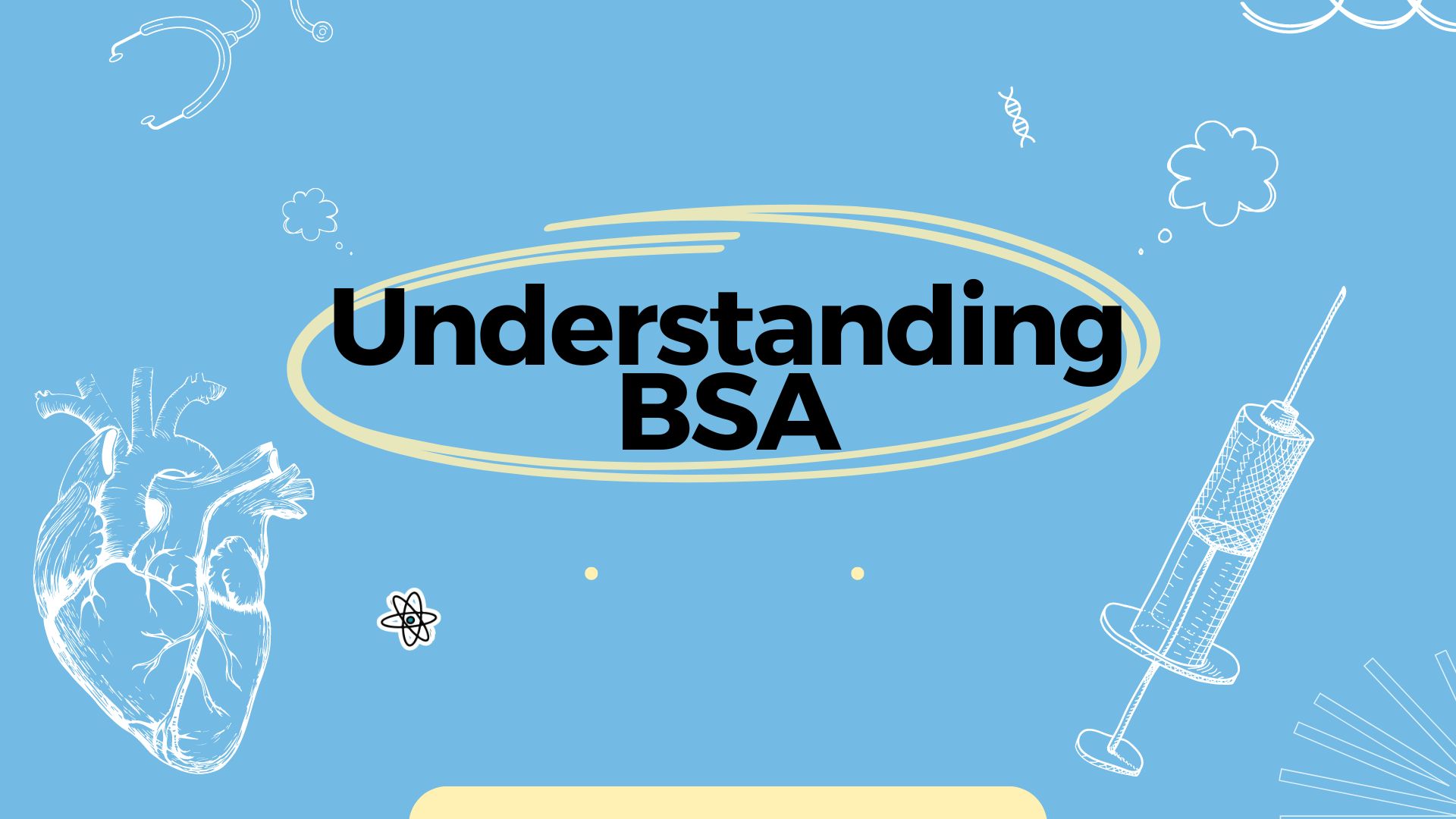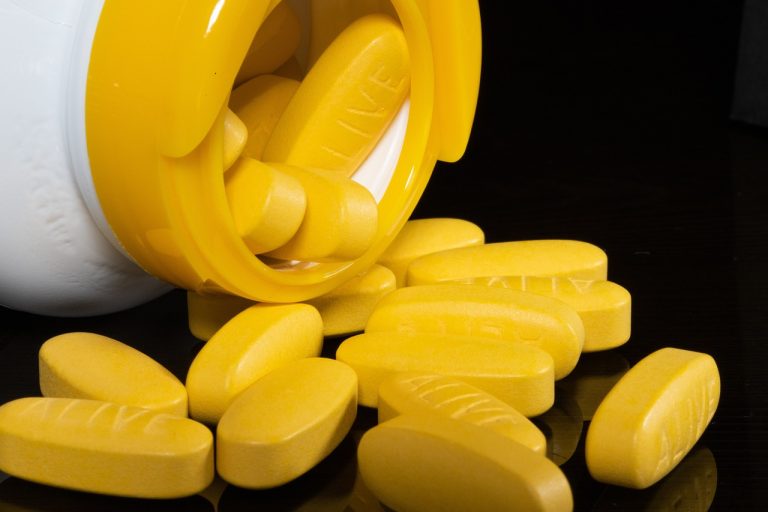Book Appointment Now

Understanding Body Surface Area (BSA) Calculations for Accurate Dosing
Accurate dosing is a cornerstone of effective medical treatment. It ensures that patients receive the right amount of medication to achieve the desired therapeutic effect without harming them.
One critical factor in determining precise drug dosages is Body Surface Area (BSA). BSA calculations help tailor medication dosages to individual patients, particularly in treatments like chemotherapy and specialized antibiotics, where precision is paramount.
What is Body Surface Area (BSA)?
Body Surface Area (BSA) is a measurement that estimates the total surface area of the human body. It is a crucial metric in medicine, used primarily to determine appropriate dosages, particularly for medications requiring precise dosing, such as chemotherapy agents and certain antibiotics.
BSA is rooted in the understanding that metabolic processes and drug effects are more closely related to body surface area than body weight alone. BSA provides a more accurate assessment of a patient’s physiological parameters, helping healthcare professionals tailor treatments to individual needs.
Historically, using BSA in medical calculations dates back to the early 20th century. Researchers DuBois and DuBois first introduced a formula to estimate BSA in 1916, which laid the groundwork for its widespread use in clinical practice. Since then, several formulas have been developed to calculate BSA, each with its own applications and benefits.
Methods of Calculating BSA
Several established formulas for calculating Body Surface Area (BSA) exist, each offering a method to estimate a patient’s BSA based on their height and weight. These formulas are used to tailor medication dosages more accurately than weight alone would allow. Below, we outline some of the most commonly used formulas and their characteristics.
Common Formulas
- Mosteller Formula
- Formula: BSA (m²) = √[(Height(cm) x Weight(kg))/3600]
- Overview: The Mosteller formula is widely used due to its simplicity and ease of calculation. It provides a quick and reasonably accurate estimate of BSA.
- DuBois and DuBois Formula
- Formula: BSA (m²) = 0.007184 x Height(cm)^0.725 x Weight(kg)^0.425
- Overview: Developed in 1916, this formula is one of the earliest methods for calculating BSA. It is still commonly used in clinical settings and research.
- Haycock Formula
- Formula: BSA (m²) = 0.024265 x Height(cm)^0.3964 x Weight(kg)^0.5378
- Overview: The Haycock formula is often used for pediatric patients as it provides accurate BSA estimates for children.
Comparison of Methods
Each formula has its strengths and applications, and the choice of which to use may depend on the specific clinical context or patient population. Here’s a comparison of the most commonly used formulas:
| Formula | Calculation Method | Best Used For | Advantages |
|---|---|---|---|
| Mosteller | √[(Height(cm) x Weight(kg))/3600] | General use, simplicity | Quick and easy to calculate |
| DuBois & DuBois | 0.007184 x Height(cm)^0.725 x Weight(kg)^0.425 | General use, historical significance | Widely recognized and validated |
| Haycock | 0.024265 x Height(cm)^0.3964 x Weight(kg)^0.5378 | Pediatric patients | Accurate for children |
Example Calculations
To better understand how these formulas work, let’s look at an example using a patient with a height of 170 cm and a weight of 70 kg:
- Mosteller Formula: BSA = √[(170 x 70) / 3600] = √[11900 / 3600] ≈ 1.73 m²
- DuBois & DuBois Formula: BSA = 0.007184 x 170^0.725 x 70^0.425 ≈ 1.79 m²
- Haycock Formula: BSA = 0.024265 x 170^0.3964 x 70^0.5378 ≈ 1.75 m²
These formulas provide slightly different BSA values, reflecting the inherent variability in estimating body surface area. However, they all offer a more refined approach to dosing than relying on weight alone.
Importance of BSA in Dosing
Accurate dosing of medications is critical to ensure that patients receive the therapeutic benefits of a drug while minimizing potential side effects.
Body Surface Area (BSA) is pivotal in achieving this balance, particularly for medications where precision is paramount.
Precision in Dosage
BSA-based dosing is essential because it accounts for the patient’s overall body size and metabolic activity more accurately than body weight alone. This precision is especially important in:
- Chemotherapy: Many chemotherapy agents have a narrow therapeutic window, meaning there is a small range between an effective dose and a toxic one. BSA calculations help tailor doses to individual patients, reducing the risk of severe side effects while ensuring the drug’s effectiveness.
- Pediatric Medicine: Children are not just small adults; their bodies process drugs differently. BSA calculations allow for more accurate dosing that considers their unique physiology, promoting safer and more effective treatments.
- Renal and Hepatic Impairment: In patients with kidney or liver dysfunction, BSA-based dosing can help adjust drug levels appropriately, as these organs play a crucial role in drug metabolism and excretion.
Examples of Drugs Using BSA Dosing
Several classes of drugs commonly use BSA calculations to determine dosages:
- Antineoplastic Agents: Chemotherapy drugs such as methotrexate, doxorubicin, and cyclophosphamide are often dosed based on BSA to optimize their efficacy while minimizing toxicity.
- Antibiotics: Certain antibiotics, like vancomycin, may use BSA for dosing in critical care settings to ensure therapeutic levels are reached without causing harm.
- Immunosuppressants: Drugs used in transplant patients, such as mycophenolate mofetil, may use BSA calculations to balance the need for immunosuppression with the risk of adverse effects.
Advantages of BSA-Based Dosing
- Improved Efficacy: By considering BSA, healthcare providers can administer drugs at doses that are more likely to achieve the desired therapeutic effect.
- Reduced Toxicity: BSA calculations help avoid overdosing, which can lead to severe side effects, and underdosing, which can result in treatment failure.
- Personalized Medicine: BSA-based dosing is a step towards personalized medicine, where treatments are tailored to each patient’s individual characteristics, leading to better health outcomes.
Practical Applications
In clinical practice, BSA-based dosing involves several steps:
- Measurement: Accurate measurement of the patient’s height and weight.
- Calculation: Using a standard formula (like Mosteller, DuBois and DuBois, or Haycock) to calculate BSA.
- Dosing Adjustment: Adjusting the medication dosage based on the calculated BSA and the specific drug’s guidelines.
Practical Steps in Calculating BSA
Calculating Body Surface Area (BSA) is straightforward and involves a few key steps. Follow this guide to accurately determine BSA and ensure that medication dosages are appropriately tailored to individual patients.
Step 1: Gather Necessary Data
To calculate BSA, you need two essential measurements:
- Height: Measure the patient’s height in centimeters (cm). If height is measured in inches, convert it to centimeters by multiplying by 2.54.
- Weight: Measure the patient’s weight in kilograms (kg). If weight is measured in pounds, convert it to kilograms by dividing by 2.205.
Step 2: Select a Formula
Choose a BSA calculation formula. The Mosteller formula is commonly used due to its simplicity:
Mosteller Formula: BSA (m²) = √[(Height(cm) x Weight(kg))/3600]
Alternatively, depending on the specific clinical context, you can use other formulas, such as DuBois and DuBois or Haycock.
Step 3: Perform the Calculation
Using the Mosteller formula as an example, follow these steps:
- Multiply the height by the weight:
Height x Weight
- Divide the result by 3600:
(Height x Weight) / 3600
- Take the square root of the quotient:
BSA = √[(Height x Weight) / 3600]
Example Calculation
Let’s calculate the BSA for a patient with a height of 170 cm and a weight of 70 kg using the Mosteller formula:
- Multiply the height by the weight:
170 x 70 = 11900
- Divide the result by 3600:
11900 / 3600 ≈ 3.306
- Take the square root of the quotient:
√3.306 ≈ 1.82 m²
Therefore, the BSA of the patient is approximately 1.82 m².
Step 4: Using Online Calculators
For convenience and accuracy, you can also use online BSA calculators. These tools require you to input the patient’s height and weight, and they automatically compute the BSA using the selected formula. Here’s how to effectively use online calculators:
- Access a reliable BSA calculator: Ensure that the website or app you are using is reputable.
- Enter the patient’s height and weight: Follow the instructions to input the data correctly.
- Select the formula (if applicable): Some calculators allow you to choose between different BSA formulas.
- Review the result: The calculator will display the BSA value, which you can then use to determine the appropriate drug dosage.
Applications in Clinical Practice
Body Surface Area (BSA) calculations are widely used in clinical practice to ensure precise and safe medication dosing. This approach is particularly vital in several key areas of medicine where accurate dosing is critical to patient outcomes.
Chemotherapy Dosing
Chemotherapy drugs often have a narrow therapeutic window, meaning that the effective dose and the toxic dose are very close. Using BSA to calculate chemotherapy dosages helps:
- Optimize Efficacy: Ensures the patient receives a dose that is effective against cancer cells.
- Minimize Toxicity: Reduces the risk of severe side effects by preventing overdosing.
Pediatric Medicine
Children are not simply small adults; their bodies process medications differently. BSA calculations allow for more accurate dosing in pediatric patients by considering their unique physiology, which is crucial for:
- Growth and Development: Ensuring medications do not interfere with a child’s growth and development.
- Safety: Preventing adverse effects that could result from improper dosing.
Renal and Hepatic Impairment
In patients with kidney or liver dysfunction, drug metabolism and excretion are significantly altered. BSA-based dosing in these populations helps to:
- Adjust Drug Levels: Tailor dosages to avoid accumulation and toxicity.
- Enhance Treatment Safety: Ensure that medications are both safe and effective for patients with compromised organ function.
Critical Care
In critical care settings, precise dosing is essential due to the severe conditions and the complex medication regimens often required. BSA calculations help in:
- Customizing Treatment Plans: Providing tailored doses for critically ill patients, who may have altered pharmacokinetics.
- Monitoring Drug Efficacy: Ensuring that medications achieve therapeutic levels without causing harm.
Case Studies and Examples
To illustrate the importance of BSA in clinical practice, consider the following examples:
- Chemotherapy in Oncology:
- A 60-year-old patient with a height of 170 cm and a weight of 70 kg is scheduled to receive chemotherapy. Using the Mosteller formula, the calculated BSA is 1.82 m². The oncologist uses this BSA to determine the precise dose of chemotherapy, balancing effectiveness with the risk of toxicity.
- Pediatric Antibiotic Dosing:
- A 5-year-old child with a height of 110 cm and a weight of 20 kg requires antibiotic treatment. Using the Haycock formula, the BSA is calculated as 0.84 m². This BSA is used to adjust the antibiotic dose, ensuring it is safe and effective for the child’s smaller body size.
Potential Pitfalls and Considerations
While Body Surface Area (BSA) calculations are a valuable tool for precise medication dosing, several potential pitfalls and considerations must be considered by healthcare professionals to ensure accuracy and safety.
Accuracy of Measurements
- Height and Weight: Accurate measurement of a patient’s height and weight is critical for precise BSA calculations. Measurement errors can lead to incorrect BSA values, which in turn can result in inappropriate dosing.
- Measurement Tools: Ensure that the tools used for measuring height and weight (e.g., scales, stadiometers) are calibrated and functioning correctly to avoid inaccuracies.
Variations Among Formulas
- Different Results: Different BSA formulas (e.g., Mosteller, DuBois and DuBois, Haycock) can yield slightly different results. It is important to consistently use the same formula within a clinical setting to maintain dosing consistency.
- Context-Specific Formulas: Some formulas are better suited for specific populations (e.g., Haycock for pediatric patients). Choose the formula that best fits the patient demographic.
Special Populations
- Pediatric Patients: Children have different metabolic rates and body compositions compared to adults. Ensure that the selected BSA formula is appropriate for pediatric use to avoid dosing errors.
- Geriatric Patients: Older adults may have changes in body composition and organ function that affect drug metabolism. Consider using BSA calculations alongside other geriatric dosing guidelines.
- Obese Patients: Standard BSA formulas may not accurately reflect the body surface area of obese patients. Adjustments or alternative methods (e.g., adjusted body weight) may be necessary to ensure accurate dosing.
Clinical Judgment
- Individual Variability: BSA calculations provide a general guideline, but individual patient factors (e.g., organ function, comorbidities) must be considered. Clinical judgment is essential to adjust doses appropriately.
- Monitoring and Adjustments: Monitoring patient response and drug levels is crucial, particularly for medications with narrow therapeutic windows. Be prepared to adjust doses based on clinical outcomes and side effects.
Practical Considerations
- Ease of Use: While formulas like Mosteller are simpler and quicker, more complex ones may provide slightly more accurate results. Balance the need for precision with practical considerations in a busy clinical environment.
- Consistency in Practice: Establish and follow a consistent protocol for BSA calculations within your healthcare setting to ensure uniformity in dosing practices.
Conclusion
BSA calculations are a powerful tool for achieving precise medication dosing but are challenging. By understanding and addressing the potential pitfalls, healthcare professionals can enhance the accuracy and effectiveness of BSA-based dosing.
Accurate measurements, appropriate formula selection, consideration of special populations, and clinical judgment are all essential components of a successful BSA dosing strategy. Regular monitoring and adjustments based on patient response will ensure that treatments are safe and effective.

Founder of the PTCBFreePracticeTest.com.



